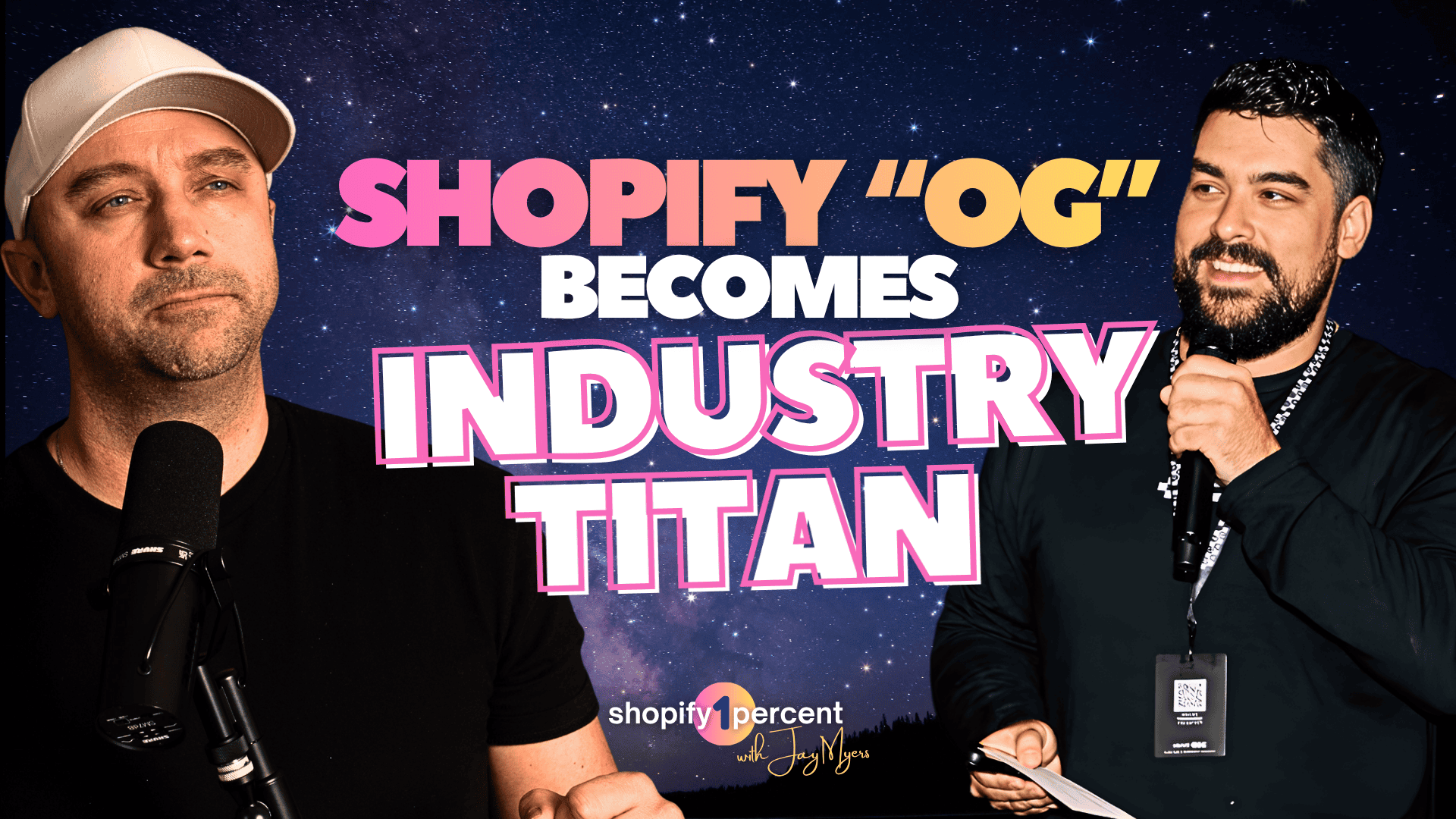Shopify Growth Tips from the Worlds Largest Shopify Agency Co-Founder: Mac King

The last few years haven’t been easy for ecommerce. Ad costs are rising, site traffic is flat, and customers are taking longer to click “buy.” But while many stores are stuck waiting for better days, the smartest Shopify brands are thriving—just not in the way you’d expect.
In this Shopify1Percent podcast episode, I sat down with Mac King, Co-Founder and CRO of Domaine, the world’s largest Shopify agency managing over six billion dollars in GMV and 300+ brand launches.
Mac spent 2013–2018 at Shopify during its hyper-growth era, helping launch the Shopify Plus Partner Program and working with some of the biggest agencies in ecommerce. Today, Domaine helps leading Shopify brands like Harry’s, Fenty Beauty, and Fellow Coffee build world-class shopping experiences.
Here’s what I learned from Mac about how brands are growing smarter, not harder, on Shopify.
1. Do More With the Traffic You Already Have
The best Shopify brands aren’t spending more on ads—they’re converting the traffic they already have.
According to Tinuiti, Facebook CPMs are up nearly 30% year-over-year, so the only sustainable growth lever is conversion rate optimization (CRO).
Mac’s advice: “It’s not about buying more traffic. It’s about converting what’s already landing on your site.”
His agency has launched over 300 Shopify sites, and 85% of them come in on budget—a wild stat for an industry notorious for overruns. One simple tactic they use on every project: replace your cart page with a cart drawer.
Cart drawers reduce friction and keep customers moving through checkout. If you’re still sending shoppers to a full cart page, you’re probably losing sales you could have kept.
2. AI Search Is the New Shopify SEO Gold Rush
One of the most interesting trends Mac revealed: AI search traffic is exploding.
Across Domaine’s client base, traffic from AI search engines like ChatGPT, Perplexity, and Google SGE is climbing month over month—even while overall traffic remains flat.
Think of this as SEO 2.0. Back in 2007, SEO was a game of white-text-on-white-background tricks to rank higher on Yahoo. AI search is having its same “Wild West” moment right now.
How to win this new Shopify SEO race:
-
Publish original, helpful content (AI loves expertise and authenticity).
-
Use conversational language that matches natural questions customers ask.
-
Add real data and stats so AI models can cite you as a source.
Shopify brands that act on this now can dominate AI-driven discovery before the rest of the market even realizes it’s happening.
3. Blogs Are Back (and They’re Your AI SEO Advantage)
Remember when blogs felt outdated? Well, they’re back—and more powerful than ever.
AI search engines like ChatGPT and Perplexity scrape trusted content to generate responses. If your Shopify brand doesn’t have helpful, well-written blog content, you’re invisible to them.
But here’s the catch: if you use AI to write your blogs from scratch, they’ll likely get flagged as AI-generated and ignored. Instead, use AI to repurpose original content—like podcast transcripts or product videos—into blogs.
I do this myself with every Shopify1Percent episode. The transcripts are real, human conversations, and AI tools confirm they’re 0% AI.
Tip: Record yourself talking through a topic, transcribe it, and then use AI to polish it. That’s the new content flywheel for Shopify SEO.
4. You’re Not a Merchant—You’re a Brand
Mac made a great point: “Merchant doesn’t make me feel anything. It sounds like someone selling fish at a market.”
He’s right. Words matter. When you start calling yourself a brand, you start behaving like one. You think about packaging, tone, photography, and how customers feel when they interact with you.
That’s what separates average Shopify stores from the ones that scale into household names.
According to Bain & Company, brands that prioritize customer experience grow 4–8% faster than their competitors. So yes—design, copy, and storytelling actually move the revenue needle.
5. Build One Shopify Site Per Customer
Here’s one of my favorite lines from the episode:
“How do you build one site per customer?”
Mac’s talking about personalization. And with tools like Klaviyo’s new personalization APIs, you can now connect your email segmentation directly to your Shopify storefront.
That means if someone clicks on an email about blenders, they land on a page about blenders—not couches. It’s all about relevance.
Brands using personalized product recommendations and content see conversion rates up to 202% higher than those without personalization.
6. First-Party Data Is Shopify’s Hidden Growth Engine
If traffic and acquisition are slowing, your first-party data—email and SMS—becomes your biggest advantage.
According to Shopify’s research, brands that use owned channels effectively see up to 20% higher customer lifetime value.
The goal isn’t just collecting emails. It’s segmenting and activating them. Mac shared a great example: Dr. Squatch. Their popup doesn’t just ask for an email—it asks fun, simple questions about skin sensitivity or scent preference. That data feeds into segmented email flows with messages that feel hyper-relevant to each user.
The result? Higher engagement, stronger retention, and a more loyal customer base.
7. The New Rules of Shopify Growth
After talking with Mac, one thing became clear:
Shopify growth today is about efficiency, taste, and timing.
Here’s what the new rulebook looks like:
-
Convert your existing traffic before chasing new traffic.
-
Create AI-friendly content early—it’s the new SEO.
-
Focus on design and UX that make customers feel something.
-
Personalize your experience from inbox to checkout.
-
Treat your Shopify store like a brand, not a storefront.
Because in 2025, the brands that grow won’t be the ones shouting the loudest. They’ll be the ones that feel the most authentic.











